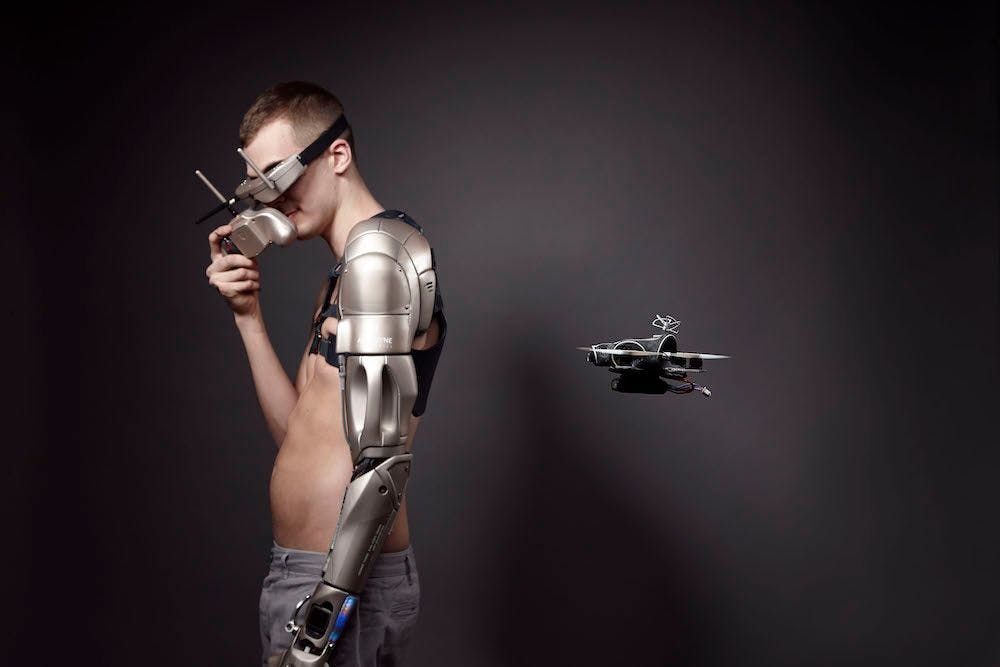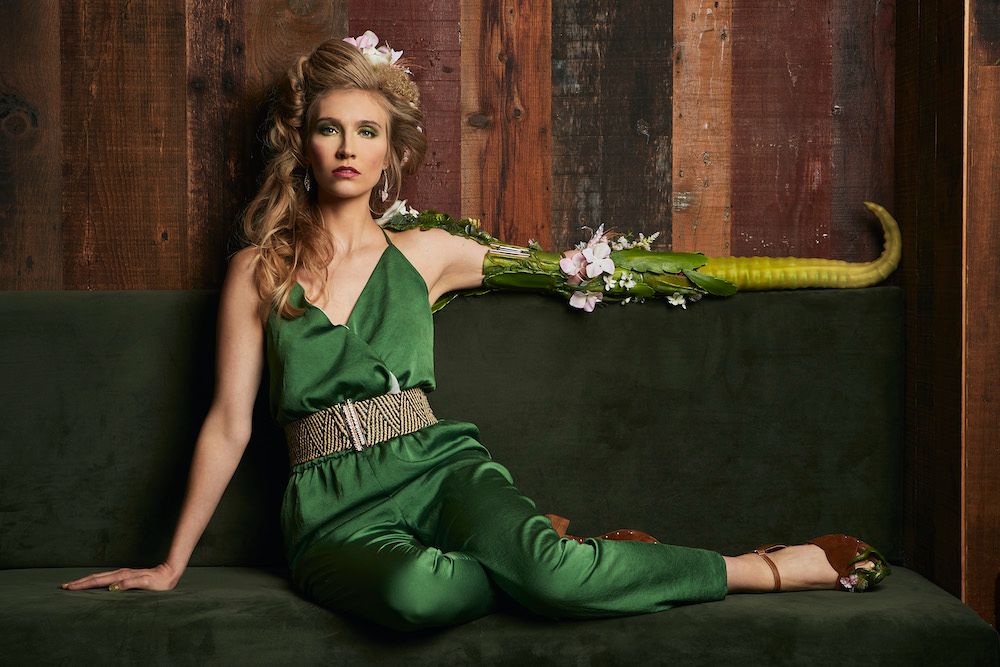
With a passion for promoting uniqueness, Sophie de Oliveira Barata, founder of The Alternative Limb Project, shares her inspiration for developing bespoke and stunning prosthetics, and why her creations are an active invitation to see and celebrate difference
Founder of The Alternative Limb Project, Sophie de Oliveira Barata, is a little shocked when I congratulate her on 10 years of her company’s existence. It’s not something she’d realised, she laughs, slightly baffled as to why she hadn’t noted her own anniversary, but as we chat it becomes clear why this milestone may have passed her by.
The Alternative Limb Project, her brainchild, was established in 2011 to create unique, imaginative limbs that empower the wearer, and inspire a positive dialogue about the human body and its differences. Her drive to design and realise these pieces, she confesses, keeps her artistic brain more than busy, and she recalls many years of working through the night, and excited conversations about materials from crystals to light beams, clocks to faux porcelain. No wonder the years have flown by.

Photography | Omkaar Kotedia
During this time, Sophie has collaborated with amputees including models, paralympians, children, charity founders, and ex-military personnel to create bespoke limbs that are both stunning to look at, and actively draw attention to what can be seen, rather than a part of the body that is no longer there, or was never present. She’s also exhibited creations across the world, prompting conversations about transhumanism, body perception, and personal choices of limb representation and expression.
Sophie, how did you first become interested in working with prosthetics?
I studied art in my early 20s, and worked in a hospital in my spare time. I was offered an opportunity to help with a medical disaster re-enactment they were carrying out for training, by creating realistic-looking wounds with makeup. The experience marked the beginning of medicine and art running side by side throughout my work ever since.
I went on to study special effects makeup at the London College of Fashion, and I became fascinated with the ways makeup can trick the human eye. Shortly after graduating, I took some work experience at a company that made prosthetics for amputees. To me that was the ultimate trick of the eye: making an artificial limb appear convincing!
I worked there for eight years, and was lucky enough to learn how to make fingers and toes, partial hands and feet, forearm and leg covers.
How did your limb creation practise evolve?
The process within that company was for the prosthetist to see clients, and then I’d create the limb required from drawings, measurements, and photographs. So, I rarely met the people we were making limbs for. However, one of our prosthetists met with a little girl called Pollyanna Hope who was just 2 years old and travelling in a pushchair when a bus mounted the pavement and sadly killed her grandmother, severely scarred her mother, and injured her, resulting in a leg amputation.
Through insurance, she was able to have a realistic looking leg each year, and I was assigned to work with her. Pollyanna had received another limb prior to meeting me – she’d had stickers on that and liked the idea of something different. I could see she was really engaged with the process, and creating her a bespoke leg meant she was getting something special that said something specifically about her. Her family and friends were always excited to see what was coming next, which changed the dialogue around her being an amputee.
Pollyanna’s leg had colourful pictures of her family in frames one year, Peppa Pig another, and at one point she drew a picture of a limb with drawers containing special items. I was just really inspired by Pollyanna and, from a rehabilitation perspective, I was deeply interested in pursuing the personalised limb route, and collaborating with others to reflect who they are through the prosthetics they chose.
How did The Alternative Limb Project come about?
I had an unwavering passion for what I’d started with personalising limbs, and I realised it was fulfilling a deep artistic desire within me, as well as reflecting the unique personalities of the people who wore them.
I started to look for amputee models to create with, and I found artist Viktoria Modesta, who was on the front cover of Bazaar magazine, with her leg to one side and her stump on show. In her article, she explained how she chose to have an amputation, despite being warned against it, because she had a withered limb and had encountered problems because of that. She shared that after the amputation she’d never looked back. Her boldness and beauty really spoke to me, the way in which she claimed control over her body.
Viktoria and I spoke, and she expressed that she saw how a prosthetic limb could be playful and an accessory, rather than something that’s purely functional. We began to collaborate, and together we created the sensational leg she wore to dance as an Ice Maiden for the Paralympic Ceremony in 2012, covered in Swarovski crystals. She wanted to focus on being an amputee, and to make a point of having an alternative, beautiful limb.
Around this time, I also worked with Priscilla Sutton on the Spare Parts exhibition, which turned pre-loved prosthetic limbs into modern works of art, Kiera Roche who is the chairperson for Limb Power, and with British swimmer and amputee Jo-Jo Cranfield. And all of that was the beginning of The Alternative Limb Project.

Photography | Omkaar Kotedia
How has your work evolved in the past 10 years since the company began?
As time passed, our creations were getting more and more interest from museums and galleries. Now, by exhibiting the limbs I co-create, I’ve realised they have the ability to start and extend wider conversations around bodies, prosthetics, individual personalities, art, medicine, and science.
To continue this work, I often use money generated to collaborate with amputees on the development of a piece they own, in return for being the inspiration and model for a copy of that limb to go on public display.
Recently I made a leg for a beautiful champion pole dancer – a man in his 50s who I sought out for a collaboration. Initially he thought that an alternative limb might be cumbersome but, after a conversation, we created a tattooed leg with a hoof that clips onto the pole, with a sculpture on the back that spins as he does, adding another feature to his phenomenal performances.
What impact do your alternative limbs have on people’s outlooks?
From the beginning, the people who came to me said they wanted a limb that would be seen. One lady I met was born without her arm just below her elbow, and she shared how people might not notice this as they began a conversation with her but she would clock the moment that they did, and it was awkward. For her, having an alternative piece was a way of non-verbalising that difference while speaking volumes, as she was actively inviting people to see her chosen limb.
Another gentleman who lost his leg while he was in the military explained how he was surrounded by amputees when he was in service, but when he returned to civilian life that wasn’t the case, and people stared at him constantly. We worked together because he wanted to give people something to really look at, in a playful way and one that was positive for him. After we fitted his alternative limb, his whole body stance changed. He was completely empowered. It was just incredible to witness.
Hero Image: Photography | Omkaar Kotedia
To find out more about expressing your authentic self, or talking about disability, visit counselling-directory.org.uk

